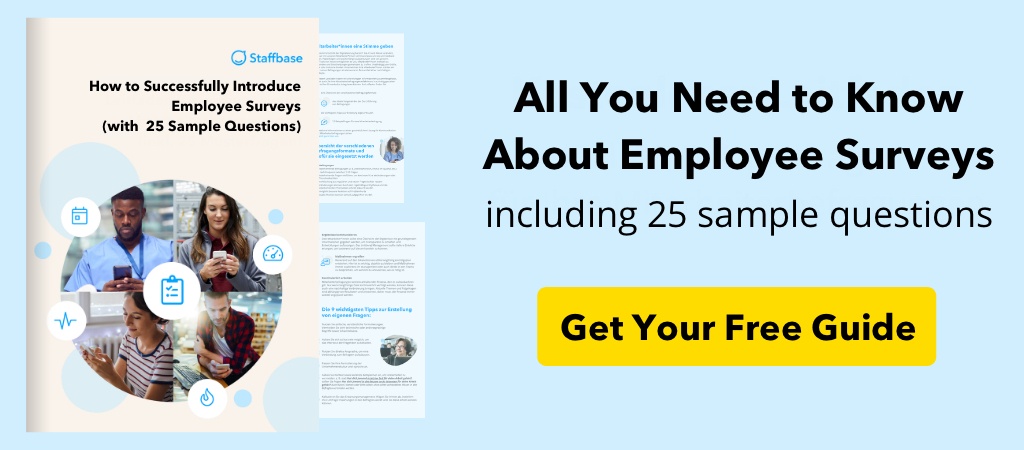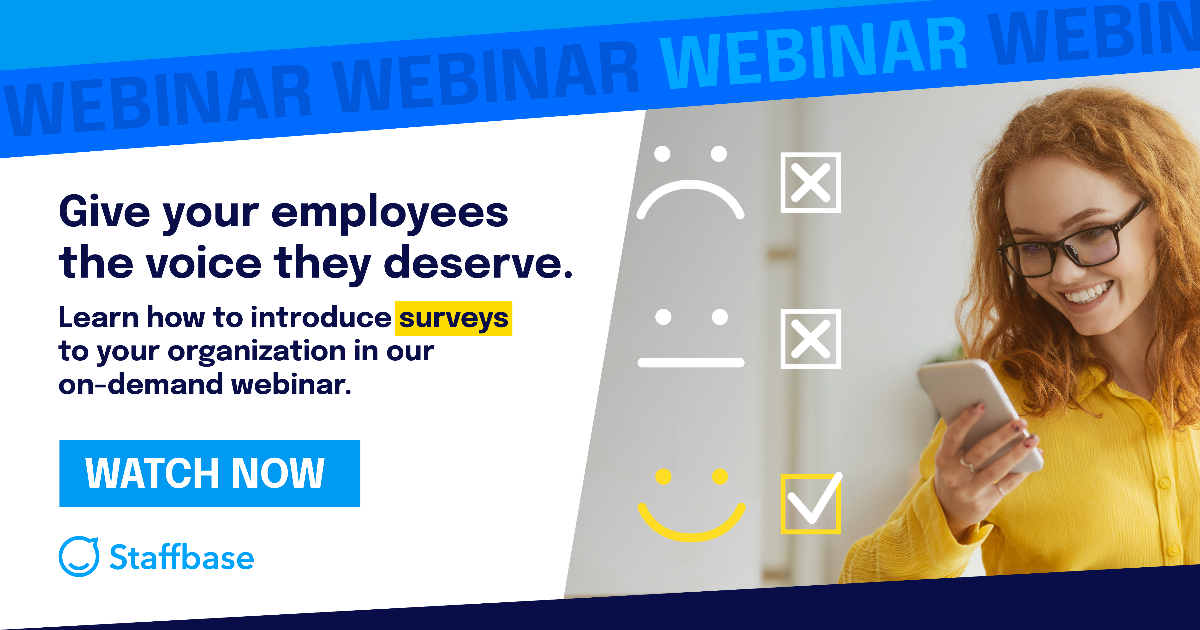Employee surveys are tricky to get right.
And though pulse surveys are markedly easier to send and collect data with, they are still easy to muck up. From poor question choice, lack of follow-up, and inappropriate response scales, to poor frequency, there are lots of ways to collect bad data and alienate your recipients.
Out of all the ways you could potentially skew your pulse survey data, poor timing is the easiest to fall victim to. If you send pulse surveys too often, people might get annoyed. And if you send them too infrequently, you won’t be collecting enough feedback for any significant analysis.
Download our Quickstart Guide to Pulse Surveys here.
Balancing employee pulse survey frequency depends on a few key factors:
- The length of your pulse survey
- What you’re measuring with your pulse survey
- Your pulse survey strategy and action plan
Pulse survey length vs. frequency
Since the length of a form or survey can influence the respondent’s willingness to complete it, an inverse relationship between a survey’s length and the frequency at which you administer it is a good rule of thumb.
Most organizations that run employee engagement surveys only run them once per year in an annual survey. For long-form surveys, once a year is definitely enough. If you were to run long-form surveys too often, employees would get annoyed and could become prone to survey fatigue.
This fatigue can start to skew your data and negatively impact engagement.
But if you are sending a short one-question pulse survey, only having employees fill it out once a year would be a bit ridiculous. You would only get data on one point, and you wouldn’t be able to accurately track it or see trends.
In order to track trends or see changes in behavior or sentiment, you need to send pulse surveys frequently.
Be careful, though. You don’t want to send them so frequently that you can’t take action between surveys. If you do, employees won’t see the connection between the data collection and change or results, and may start to believe the surveys are unimportant or useless — which will negatively impact your data and skew your results as well.
Tracking change with employee pulse surveys
You could just pick a sending frequency and stick to it. However, you would miss out on one of pulse surveys’ biggest benefits: tracking change.
Rather than waiting until the complaints mount, pulse surveys allow you to check in during the process of change and see how it is affecting employee sentiment, engagement, and understanding.
It’s important to measure all of these factors in a changing company, and pulse surveys can be applied to measure sentiment, engagement, and understanding surrounding:
- New technology adoption
- Changing leadership
- Changing organizational objectives
- Policy changes
- New company or department initiatives
- Recent events
Developing a pulse survey strategy
Sending out pulse surveys willy-nilly is a good way to alienate employees with irrelevant survey questions and data you can’t do anything with. You have to think strategically — not just about when you are sending out pulse surveys, but why you’re sending them and how you plan to use the data you’ve gathered.
The first step is figuring out what you’d like to know and asking good survey questions.
Step 1: Ask purposeful survey questions
The best pulse survey questions are packed with purpose. Purposeful questions are meaningful to your employees and your organization, and these questions can lead to actionable data.
With good pulse survey questions you can collect data on:
- Meaningful work
- Trust in leadership
- Trust in the organization
- Management performance
- Work environment
- Learning and growth
- Culture
- Relationships
- Communication
- Topical sentiment
- Change implementation (policy, leaders, organizational)
- Effectiveness on strategic initiatives
- Progress towards KPIs
Step 2: Make an action plan
Besides being annoying, frequent long-form surveys can also disillusion employees. If management is collecting that much engagement data and not taking any action based on their findings, your surveys will seem futile.
We reached out to one of the leading experts in employee surveys and survey design, Dr. Palmer Morrel-Samuels, PhD, for his take on pulse surveys:
As research has repeatedly proven, if large corporations build an employee survey that is valid and reliable — even if that survey is brief and intermittent — it can literally generate millions in new revenue and save millions in avoidable costs. On the other hand, a poorly designed survey — regardless of its length and schedule — is nothing more than a waste of time and money. Do it right, or don’t do it at all.”
Dr. Palmer Morrel-Samuels, PhD., Employee Surveys and Survey Design Expert
The Bottom Line: Perfect frequency, question choice, and survey length won’t matter without a plan to implement action.
How often should you send employee pulse surveys?
Once you have selected your questions, thought strategically about what kind of data you are looking for, and have a plan in place to take action based on said data, you are ready to send your pulse survey.
But the question remains: How often should you send employee pulse surveys?
Whether you are tracking change or just looking for some one-time data on the perception of the last departmental meeting, follow these guidelines when setting your schedule:
- Generally, no more than weekly and no less than monthly is a good balance.
- Your survey length should be inversely correlated with its frequency (i.e. the shorter the surveys, the more often you can send; the longer the survey, the less frequently you should send).
- Make sure you send at least quarterly to track change.
- Set benchmarks early so you can measure against them during change initiatives.
- Send often enough to track change, but not so often that you can’t take action between surveys.
If you’re looking for actionable questions to get you started, check out our posts on the 3 best pulse survey questions for employee feedback that will turn employee feedback into awesome emails and the 10 employee pulse survey questions you should be asking.
Ready to get your feet wet with employee pulse surveys? Book a demo to get started.





